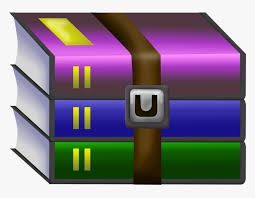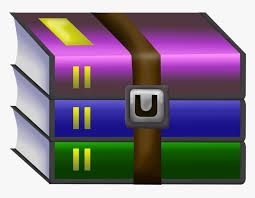$24.99
WEB222 Final Assessment Overview Solution
The WEB222 final assessment is equivalent to a final exam, but can be done remotely and submitted online.
The assessment has three parts and builds on your knowledge from the course to create websites. Specifically, you will be asked to do the following:
1. Create a Personal Website with information about yourself, your interests, and your expertise (worth 10%)
2. Research and Implement a Static Hosting solution for your final assignment, so it can be viewed online (worth 5%)
3. Create a Reflection Video Walk-Through about the work you did in steps 1 & 2 and upload it to YouTube (worth 5%)
Submission
• A .zip file of your complete web site code (part 1)
• A link to your publicly hosted web site (part 2)
• A link to your private YouTube video (part 3). NOTE: make sure you publish the video unlisted/private, so only the people who have the link can view the video
Honesty Statement:
Part 1. Website Design (10%)
Your website will be expected to have the following structure and elements:
• Make sure you choose the most appropriate, semantic HTML5 elements for all of your page’s content (e.g., not everything should be a <div> or <p>). Your page must be valid HTML5.
• All CSS and JavaScript should be put in their own .css or .js files (i.e., not embedded in the HTML), and use proper indentation, formatting, and include appropriate comments.
• All website content should be centered in the viewport, having equal margins on the left and right. The page content should cover 95% of the viewport width (i.e., the width of the browser window). However, the content width should be limited to 1,024 pixels, never growing larger than that (take a look at max-width css property).
• Your site should use elements of a Responsive Design. That is, it should work equally well, and optimize space and sizes, on both desktop screens (wide) and mobile phones (narrow). Research and use CSS Media Queries to define classes and rules that work on a narrow screen (400 pixels or less) vs. your full desktop (greater than 400 pixels). For example, font sizes, margins, layout choices, image sizes, etc. could all be different if viewed on a phone vs. desktop. There are lots of ways to implement a Responsive web site. Research and use a few of these techniques in order to accomplish this.
• The website should be divided into different sections, each delineated by either a stylish horizontal line (see https://ikea.com) or a different background color (see https://discord.com for an example). Use a palette from palettelist.com to improve the design.
• The top section should have the following structure. NOTE: the exact styling you use is up to you, make it your own, but convey the same information with the general structure. You can use Google Fonts and Font Awesome to improve the website’s aesthetics:
o an image of you (or an image that you like which represents some aspect of your personality). Make sure you have the rights to use any images you include
o a professional title you hope to get in the future o two links
▪ the Resume link should download a PDF version of your resume (see the download attribute for an anchor element)
▪ the Contact Me link should take you to a Contact Me form on the same page, which will be discussed in more detail below.
• Create an infographic section that tells us about you. Again, the exact styling is up to you, make it your own, but try to recreate this structure. Include the following information:
• Create an education section that tells us about your education. Use your own style to convey the same information with a similar structure.
• Create a section with a Contact Me HTML Form. Users will use this to fill out their information along with a message to you. Your form should include the following, and all fields should be mandatory unless otherwise noted, and use the most appropriate <input> type and labels:
• Name
• Email Address
• Address
• City (use a <datalist> for autocomplete of common Canadian cities)
• Postal Code (must be a valid Canadian Postal Code, with or without a space, use a regex pattern)
• Radio Button Options to specify what this is about: one of "Question",
"Comment", or "Hiring". If the user selects "Hiring", dynamically reveal (with JavaScript) another input box to enter the hourly rate (with proper validation). In the case of "Comment" or "Question" hide this input box
• A large area to enter the message that they want to send (it can show at least 5 lines of text at the same time)
• Choose at least 1 more input control of your own choosing and make it fit thematically with the rest of the form
• The form should submit to https://httpbin.org/post using the POST method, and only allow the user to submit when all data has been entered and there aren't any validation errors. The data posted to httpbin.org should include all data defined in the form above.
Part 2. Static Hosting (5%)
You are asked to research and implement a static hosting solution for your web site, so that it is accessible via a public URL. You do not need to spend any money to achieve this, since many free hosting services exist:
1. Netlify - https://www.netlify.com/
2. Vercel - https://vercel.como/
3. GitHub Pages - https://pages.github.com/
If you would like to consider registering a Custom Domain Name, that is also something that you could do. See more info at https://www.cira.ca/ca-domains/register-your-ca. This is optional, and not required, but good experience for all web developers.
Please submit the public URL for your project. All pages, images, etc. must work and not return 404s or other errors.
Part 3. Reflection Video (5%)
You are asked to create a Reflection video that is 5 minutes in length and upload it as a private video to YouTube (i.e., only the people you share the URL with will be able to see it).
Your video should include audio of you talking and a screen-capture or screenshots of all the elements you discuss (i.e., you don’t have to be on camera if you aren’t comfortable doing so, it’s up to you). Use the video to give a walk-through of your website and the technologies you used.
In your reflection, please discuss and demo all of the following:
• What techniques, technologies, and patterns did you use in your website?
• Which other web sites did you use as inspiration? What aspects did you use in your own design?
• Demonstrate and explain how you made your web site responsive, so it works well on both phone and desktop browsers.
• Explain some of the main features of HTML Forms and Input elements you used to help make sure the user’s input was valid for your forms, and to keep them from submitting mistakes.
• How did you test that your responsive design and web form were both working, and did this testing find any bugs in your implementation? How did you address these?
• What advice would you give to other web developers building forms for their pages based on your own experience? What lessons did you learn?
• What improvements would you make to your webpage? What would you do differently if you built it again?



